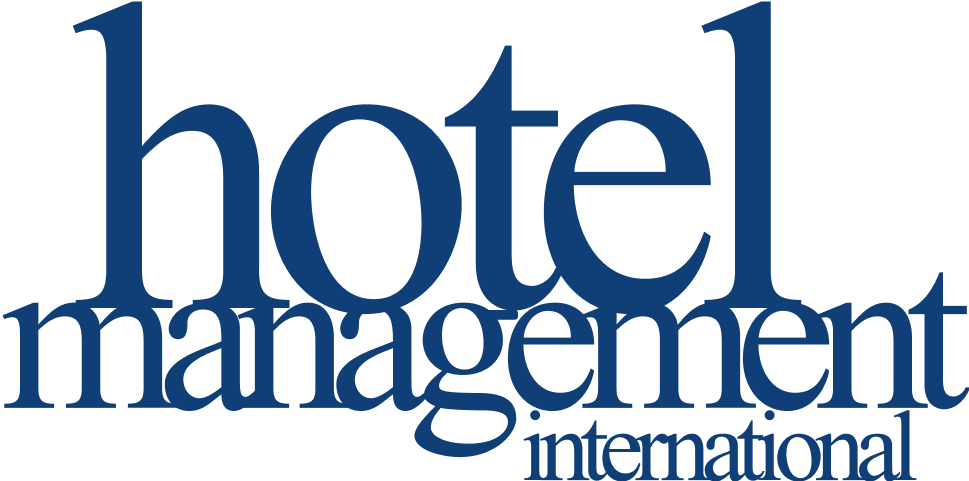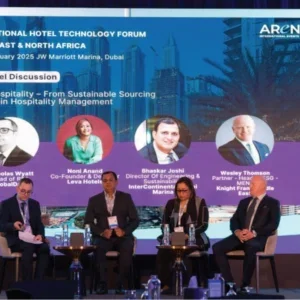
Recruiting 4.0: How to get past the electronic guard
Frederike Czerlinski, research scholar with the HFTP Middle East Research Center and student at the Emirates Academy of Hospitality Management in Dubai, UAE.
In today’s job market, traditional recruitment methods are getting a major makeover. The rise of artificial intelligence (AI), algorithms and bots are a game-changer for both employers and applicants. While the era of recruiting 4.0 implies efficiency and convenience for employers, it also holds some challenges for job seekers.
Opportunities of recruiting 4.0
Recruiting 4.0 stands for digitally supported recruiting. For companies keeping up with the times and making use of the advancements in AI, the days of reading thousands of application forms are over. AI and automation are becoming integral parts of recruiting processes. For instance, applicant tracking systems (ATS) automatically scan resumes, saving large companies in particular a lot of time and money.
Taking it a step further, AI-powered interviews can be used to assess a candidate’s suitability. Incorporating chatbots into the recruitment process streamlines the handling of frequently asked questions both pre- and post-employment, resulting in improved candidate satisfaction and relieving recruiters. Technologies like those are transforming the stages of today’s recruitment.

Major concerns of AI in recruiting
According to a study by the Society for Human Resource Management, approximately one out of four US businesses use AI in HR, namely for hiring and recruiting. The increasing usage of AI in this field is partially seen critically, as it ultimately influences peoples’ careers. AI is known to be dependent on its training data, therefore it is not protected from biases. While using AI for scanning resumes, companies need to guarantee that the systems are built to be fair. Applicants must be treated equally and protected from discrimination through data analysis, and certain privacy and security requirements must be observed when handling sensitive employee data.
In New York, for example, there is the law NYC 144 that forces enterprises to have automated employment decision tools (AEDTs) examined for racial and gender biases through third parties. The results will be disclosed and might incur penalties up to $1,500 per infringement. Another aspect is that it can be difficult for recruiters to understand why applicants were excluded because AI algorithms rarely provide a justification for their decision. In some cases, recruiters don’t check whether the decision is correct.
In recent news, the story of Anthea Mairoudhiou, a make-up artist working for MAC cosmetics attracted attention. Due to organisational changes, there was an employee surplus, so the cosmetics company decided to do another round of interviews, conducted by Hire Vue, with no human involved. Despite her expertise, high record of sales and low sick leave, she wasn’t asked relevant questions. As a result, she, and several of her colleagues lost their jobs, because the AI decided so.
There’s no denying that incorporating AI into recruiting processes offers certain benefits for HR departments and introduce efficiencies into company operations. It can significantly save recruiters time and resources, allowing them to focus on more important tasks. Nevertheless, AI should be used in a controlled manner, and decisions should be transparent and traceable by recruiters.
Helpful tips for applicants
As technology continues to change the hiring process, it is critical to be prepared to face both opportunities and problems that come along with the advances. While AI can assist recruiters in identifying the most suitable candidates, applicants must be aware of the new rules to play by to avoid being directly rejected. Here are some ways to enhance the chances of success:
- Research: Before applying for a job, research the company to understand its values, culture and mission as well as the requirements for the job and the application. Remember, employers may also research you. It’s not unusual for companies to use AI to analyse candidates’ social media presence. Given that we all leave digital footprints, it’s advisable to review your social media profiles to ensure a professional image.
- Optimise your resume: Ensure your resume adheres to specified formats. In case of doubt use a common font and avoid overly complex layouts, as well as abbreviation to maximise its readability. Tailor your application to the job description by using relevant keywords, increasing the likelihood of recognition by ATS algorithms.
- Dealing with AI interviews: In case you are confronted with AI interviews, practice answering common interview questions, while answering in a clear manner and speaking naturally. Afterwards it can be helpful to follow up with the actual recruiter to reiterate your interest in the position.
AI-supported application processes are used more and more in human resources departments, with approximately 40% adoption observed internationally. New developments due to digitalisation are reshaping application processes. From algorithmic analysis of body language to immediate rejections by AI, these advancements can be concerning for applicants.
However, AI can automate routine procedures such as resume screening, allowing recruiters to dedicate more time to strategic issues. While AI improves productivity, human recruiters remain essential for relationshipbuilding and the final understanding and judgement in personnel selection. After all, applicants can apply the mentioned tips to bypass the AI gatekeeper.
Navigating the digital seas: A dive into corporate digital responsibility in hospitality
Khoi Yan Phon, student in the master of science in global hospitality business.
In the dynamic scene of hospitality, where traditional business practices meet disruptive innovations, a seismic wave is on the horizon. This is not just referring to the usual corporate social responsibility (CSR) jargon; it is diving into the digital deep end with corporate digital responsibility (CDR). The industry must explore the nuances of CDR, and how it reshapes the way hospitality giants navigate the tech-infused landscape.
The crossroads of CSR and CDR
Unlock the mystery of CDR – think of it as the cool cousin of CSR, orchestrating a symphony of digital prowess and ethical commitment. As the hospitality industry dives deeper into the digital pool, it is also a tightrope walk – balancing obligations to people, the economy and the planet. It’s about managing the values guiding digital technology use, a voluntary commitment to legality and ethics, ensuring wise tech use, and being accountable for the consequences. CDR goes beyond the social, economic and environmental dimensions. Today, the digital divide, sensible data stewardship, cybersecurity, sustainability and human rights are taking centre stage – it’s a responsibility buffet. Essentially, it’s CSR with a digital twist.
Riding the digital wave
But why should we care about this shift? For one, the digital divide is at our doorstep. Imagine a world where not everyone has access to the wonders of the digital domain. Hospitality companies must bridge this gap, ensuring that their technology adoptions are inclusive, rather than alienating potential customers. It’s not just about using fancy new technologies, but how they can be utilised to ensure everyone rides the digital wave, too.
And the stakeholders in this digital saga? Everyone from customers to employees, society, stakeholders, suppliers and Mother Earth. Collective values and norms shape an environment where consumer privacy preferences move in harmony with transparent guidelines. This surpasses mere transactions, impacting the dynamics of customer-company relationships, organisational ethics and societal discourse.
The time has come for sustainability and digitalisation to meet. Picture this: artificial intelligence turning the wheels of revenue analysis, chatbots handling customer quibbles, internet of things aiding smart energy, and virtual reality summoning guests into a realm of immersive experiences. The hospitality industry is not just checking you in, it’s checking into the digital age. That’s where CDR steps in, asking companies to embrace innovation while respecting the environment, society and their own future.
Echoes of change: the call for a comprehensive understanding
Here’s a thought to ponder: how do major hospitality companies report on their digital responsibilities, and how does it influence your choices as a consumer? Major hotel chains, as digital trendsetters, find themselves at the forefront of this endeavour. The challenge? How to dance with customer data without tripping on the privacy and cybersecurity tightrope. Those are some of the dragons they must conquer, especially when dealing with substantial financial transactions and sensitive customer data.
Take Walmart and Deutsche Telekom, for instance. They’re not just talking the talk; they’re walking the walk. Walmart emphasises “digital citizenship”, focusing on ethical data use and responsible tech practices. Meanwhile, Deutsche Telekom is on a mission of “responsible digitisation”, integrating CDR into its corporate responsibility DNA. Companies are encouraged to craft individual CDR strategies, revisiting and revising policies to keep up with the ever-evolving tech landscape.
It is intentional that this exploration raises more questions than answers. CDR is a relatively fresh subject, and we are navigating through the uncharted territories of digital responsibility. But as the hospitality industry sets sail on the digital seas, the real question is: will it weather the storm responsibly?






